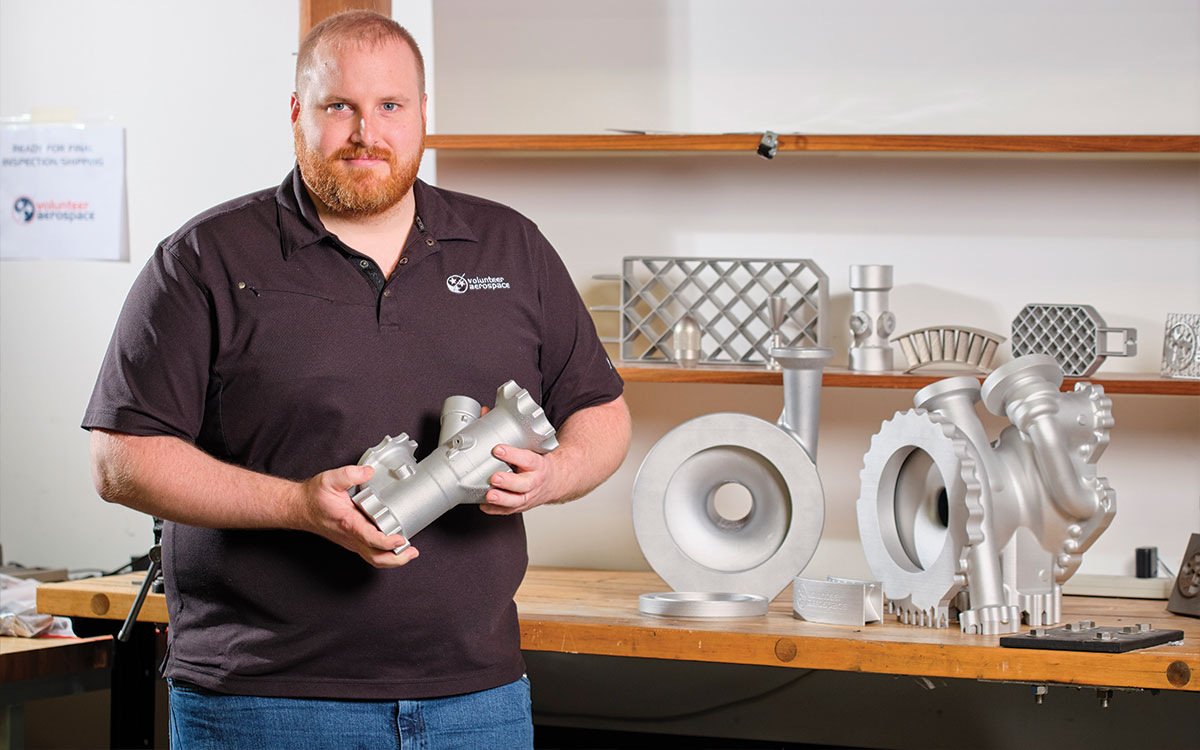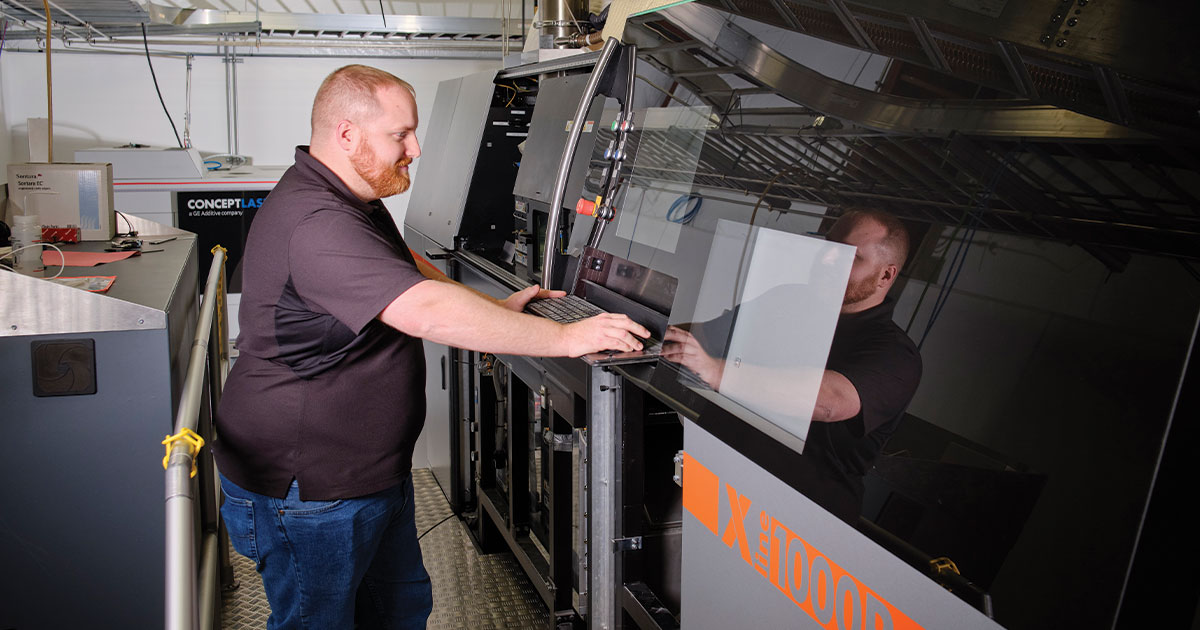Print a Plane (and fly it, too)
By Laura Tenpenny. Photography by Shawn Poynter.
“We did an electro-optical mount that was one of our most challenging pieces to date. That part should be flying sometime next year,” said Jonaaron Jones (BS/MSE ’13, MS/MSE ’15).
This piece and others like it, produced at Jones’s Knoxville business Volunteer Aerospace (VA), represent the great trust that a growing number of aerospace industry giants have put in Jones and his relatively new company.
VA has made a name for itself in additive manufacturing, 3-D printing metal parts for major aerospace corporations and the defense industry. This advanced manufacturing process makes possible complex geometries and specs and significantly reduces the amount of time and energy taken to produce these parts compared with traditional manufacturing methods.
Recently, VA has expanded into manufacturing primary plane parts. These primary pieces are essential to a plane’s operation and therefore require
the utmost accuracy and reliability. This area is where VA excels and why Jones has had such exponential growth since starting up in 2017.
“Additive manufacturing has garnered the respect of the industry, and now we’re able to print these essential plane parts. Having that level of trust with a company, that they trust your process enough to go fly with it, that’s big,” said Jones.
Jones founded Volunteer Aerospace at the close of a Defense Production Act Title III program focusing on 3-D printing liquid rocket engine components held in partnership between UT, ORNL, and Aerojet Rocketdyne. The program runs through the US Department of Defense and provides immediate resources to government defense and security entities through domestic, industrial operations.
Jones’s love for metalworking began when he was a teenager. He attended Oak Ridge High School where he was part of its robust welding program. After graduating, he went into the workforce, gaining industry experience.
“This led to where I am today. I wouldn’t change it if there had been the option to go straight to school,” Jones emphasized.
That metallurgical background gave him the context to recognize his interest in additive manufacturing during his time at UT studying Materials Science and Engineering. He began working at ORNL’s Manufacturing Demonstration Facility through the lab’s partnership with UT for his graduate studies, learning on the very printer that he would later purchase to start his business.

He credits his venture into additive manufacturing to his graduate advisor and one of his most influential professors, UT-ORNL Governor’s Chair Suresh Babu, who encouraged him to see what was happening at ORNL.
“Up to that point I had just seen the polymer stuff, you know, at-home plastics. It wasn’t that exciting. Then I went to ORNL and saw their metal additive machines that print metal parts. That’s kind of when it clicked that it’s what I wanted to do” said Jones.
Over its two years of operation, VA has grown from one 3-D printer to three, with plans to bring on two more pieces of metal additive equipment in 2019. According to Jones there are only about ten additive manufacturing shops like theirs in the country, so work is fairly steady. Jones anticipates it will continue to burgeon.
“We plan to stick primarily with just 3-D printing of metals, and we’re looking to build our own facility. Once we have that, we want to focus on full-value chain, a one-stop shop for our customers. We want to print the part, post-process, machine, assemble, and deliver it. That’s the goal for the next five years, to get to that point,” said Jones.
Judging by the pace at which VA has grown, Jones’s vision for the future may take of more quickly than expected.
